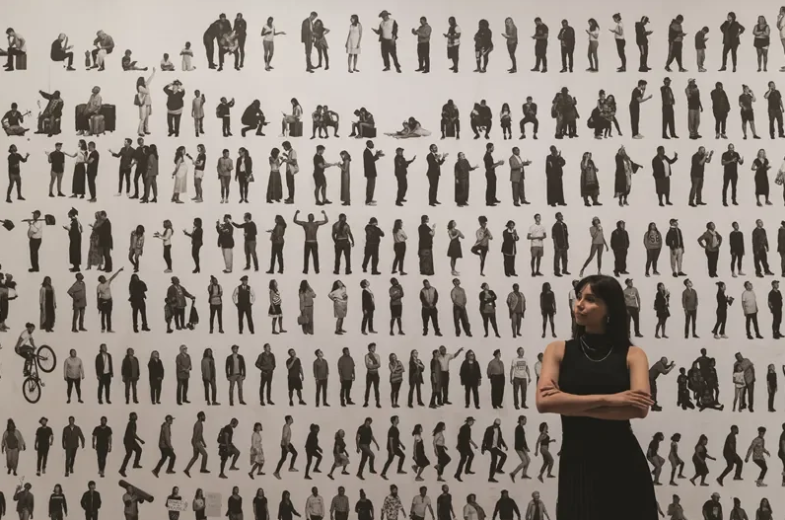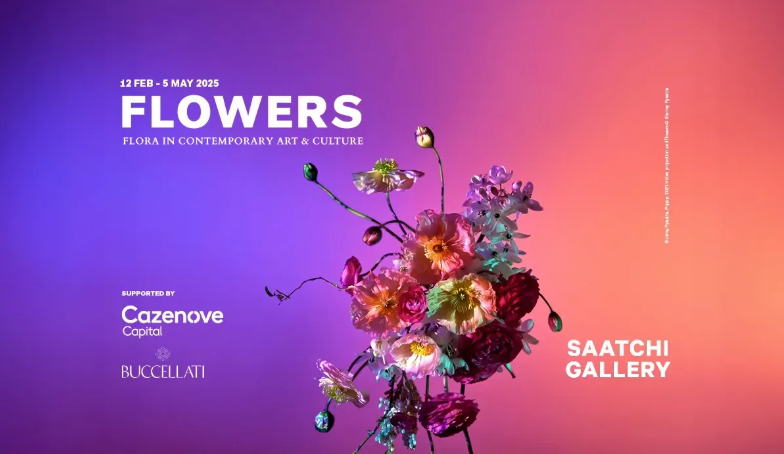
After starting his career as an art bookseller and fine art publisher, Paul Foster joined Saatchi Gallery in 2012. He is now its Director. He spoke to Cazenove Capital’s Victoria Beckett about the gallery and his work.
Paul, thank you for joining us. The Saatchi Gallery has an interesting backstory. Can you tell us about its origins?
It was established by Charles Saatchi in 1985 to showcase his art collection. First established in an old paint factory in north London, the gallery represented an innovative way to present contemporary art to the public in the UK. The collection and gallery were at the heart of a boom in the production, presentation and consumption of contemporary art through the following decades.
The gallery moved to the Duke of York’s Headquarters building on King’s Road, Chelsea in 2009 where it remains to this day. In 2019, it transitioned from a private enterprise to a registered charity with new trustees and new management. The gallery ceased showing works from the Saatchi Collection and redefined itself with a mission to showcase contemporary creativity in its many forms – with a particular focus upon the visual arts.

What is art’s role today?
Art is an excellent way of introducing people to new experiences and different view points. That is why Saatchi Gallery is committed to making contemporary art accessible to all. Simply going to a gallery to see an exhibition provides an opportunity for cultural exchange and understanding between artists and viewers.
We’ve sought to diversify the voices and perspectives behind our exhibition programme by collaborating with other galleries, curators and organisers of exhibitions. Some of the most exciting art being created in the UK, and beyond, is emerging from previously or currently marginalised communities. It is important that exhibitions not only feature works from such communities but that the presentation is also directly influenced or framed by figures connected to those communities.
You recently had an exciting exhibition called “Homelessness: Reframed”. Can you tell me a bit about that?
This exhibition was the result of a collaboration with Homewards, an initiative of the Royal Foundation led by Prince William, and the American philanthropic foundation Eleven Eleven. We wanted to question people’s perceptions of homelessness. All three partners worked with advisers who had experienced homelessness to develop an exhibition that included works by artists who had also experienced homelessness, along with other, more established artists. The result was an exhibition that tackled a tough topic in a disarmingly hopeful and positive way. It was free-to-enter and visitor engagement was unprecedented, demonstrating the impact that visual art can have.
Which upcoming exhibitions are you particularly excited about?
We open an exhibition Flowers – Flora in Contemporary Art & Culture in February 2025. This will explore the timeless inspiration of flowers on artistic creativity. The exhibition will be a blast of colour and vibrancy. It also features exquisite paintings of orchids kindly loaned from the Schroders Collection.
2025 marks the 40th anniversary of Saatchi Gallery. We are planning exhibitions that look back at work over that period. We don’t yet know what some of them will be, but the anticipation is exciting.

Do you work with private collectors? What advice would you give existing or aspiring collectors?
In our experience, most collectors want to see their artwork appreciated by more people. Understandably, they can also be very protective of the works and, by extension, the artists who created them.
The advice to collectors to “buy what you like” has great truth to it. A collection of diverse and eclectic works that are the result of passionate and committed acquisition is, for me, far more interesting than the calculated assemblage of works by established names stored in a warehouse. A collection should reflect the collector and should be seen.
How has the digital transformation impacted the way the Saatchi Gallery operates?
Social media and digital platforms are now our primary means of engaging and communicating with our audiences. Paradoxically, the principal message is that art is best engaged with physically. We encourage our audience to visit the gallery as a physical location. Within that setting, many more exhibitions now include digital elements and immersive experiences.
Many digital interactions with art are underwhelming compared to seeing works in person. Some artists prosper on social media but the depth of engagement is questionable. NFTs, for instance, proved to be distracting and lacked artistic substance. We believe that this situation will change. Forward-looking artists, working with new technology, are likely to be at the vanguard of how this happens.
Who are some of your personal influences in the art world?
It is hard not to admire artists like Ai Weiwei, who have created artworks and championed freedom of expression in the face of oppression. Echoing the thoughts of Harry Lime in The Third Man, great art often emerges from challenging situations. I think of artists like Kathe Kollwitz,Otto Dix and others labelled as degenerate in 1930s Germany who produced vital and essential artworks. Another part of my being gets lost in the colour fields of Mark Rothko, or the dense layered marks of Cecily Brown. At other times I admire the bubblegum colours and humour of pop artists and some street artists. There are also gallerists, curators and writers who have made major contributions to the demystification of art and the opening up of art to wider audiences. These figures include Alfred H. Barr, Kenneth Clark, Matthew Collings and, more recently, Katy Hessel.
This article is issued by Cazenove Capital which is part of the Schroders Group and a trading name of Schroder & Co. Limited, 1 London Wall Place, London EC2Y 5AU. Authorised by the Prudential Regulation Authority and regulated by the Financial Conduct Authority and the Prudential Regulation Authority.
